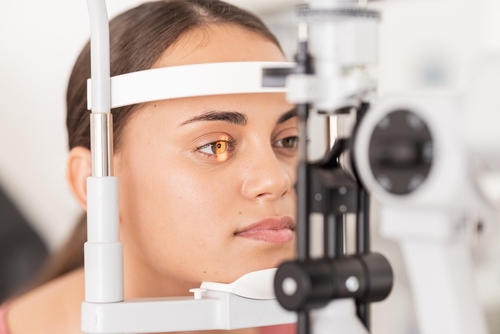Posted by: Dr. Ramsarat in Dry Eye, LipiFlow

People with dry eye conditions experience symptoms such as burning, itching, and excessive tearing. Patients also experience blurry vision, light sensitivity, and other uncomfortable symptoms.
There are different causes of dry eye, the most common being meibomian gland dysfunction (MGD). Eye doctors recommend various treatments to relieve dry eyes. Here is more about the LipiFlow® treatment process and what to expect during your session.
Meibomian Gland Dysfunction
The meibomian glands along the eyelids are responsible for the production of oil for the tear film. When the glands are blocked, they do not produce enough high-quality oil. The tears cannot then protect the eye surface or keep the eyes well lubricated.
Dry eye treatment can help unblock the tear glands, allowing them to resume natural oil production. The LipiFlow thermal pulsation system can help unclog the glands, providing relief from dry eye symptoms.
LipiFlow Treatment Process
Patients suffering from dry eye due to meibomian gland dysfunction can benefit from FDA-approved, cutting-edge technology. LipiFlow therapy is a breakthrough treatment that allows the meibomian glands to resume normal function.
The LipiFlow device heats the eyelid and massages away the debris causing the blockage. The 12-minute process helps flush away dead cells and oil from the glands, providing relief from symptoms.
What To Expect During LipiFlow
Eye specialists use LipiView, an imaging device, to determine if a patient is a good candidate for LipiFlow. Before the procedure, technicians apply anesthetic drops to the patient’s eyes. When the eyes are numb, doctors place activators below and above the eyelids.
The single-use, sterile activators do not touch the eye surface. They exert constant pressure and warm up for two minutes. The temperature rises and begins to dissolve the obstructions in the glands. For the next 10 minutes, the activators apply different pressure levels in a cycle, massaging the eyelid area.
After The LipiFlow Procedure
After the procedure, the meibomian glands begin normal oil production almost immediately. The treatment helps restore healthy oil production, improving tear quality. The oil keeps the tears from evaporating too fast. It improves the overall eye surface’s health and can help improve vision. Most patients experience relief after a single session, but eye specialists recommend a series of treatments for optimal results.
Benefits Of LipiFlow Therapy
The dry eye treatment is noninvasive, painless, safe, and effective. Patients do not experience side effects after LipiFlow. The treatment does not involve medications. You do not have to use eye drops frequently.
There is no downtime after treatment, and patients return to their activities immediately after the procedure. Most patients experience long-term relief after a single therapy session. Your eye doctor will develop a treatment plan to suit your needs.
If you experience dry eye symptoms, visit an eye specialist for a proper diagnosis. The symptoms include gritty or stinging eyes, the sensation of something in the eye, scratchy eyes, and fluctuating vision. An eye exam will help determine if you have dry eyes and the underlying cause. The doctor will examine your eyes to see if you can benefit from the LipiFlow treatment.
For more on the LipiFlow treatment process, visit Dr. Veronica Ramsarat, OD. Our office is in New York, New York. Call (833) 255-0096 to book an appointment today.